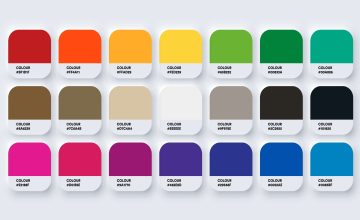Comparing apples and oranges – a look at accessible HTML vs PDF
February 5, 2016
We often have discussions with our clients about using accessible HTML and/or PDF for posted content to comply with AODA requirements. Below we have summarized the most common questions, myths and answers.
Questions, myths and answers
1. What is HTML?
HTML is best known as a website. It is accessed through web browsers like Internet Explorer, Chrome, Safari or Firefox. These pages can be displayed on laptops, desktops, tablets and mobile devices.
2. What is PDF?
PDF is the most widely distributable document format with focus on ensuring the file looks exactly the same as the source document on any device or operating system. PDF documents are fully secure (meaning the content can’t be edited) and adhere to standards. PDF documents also can be displayed on laptops, desktops, tablets and mobile devices.
3. Which format is better?
The short answer is…it depends, however the answer is not to select a single format. There are a few factors to consider about the content when selecting which format to use. Both formats have their place, and the table below is our own rule of thumb when recommending which format should be used for a given piece of content:
![]() – Orange Checks represent that the format can be used, but is not ideally suited
– Orange Checks represent that the format can be used, but is not ideally suited
![]() – Green Checks represent that the format is ideally suited for the type of content
– Green Checks represent that the format is ideally suited for the type of content
| HTML | Winner | ||
|---|---|---|---|
| Starting Point | |||
| Microsoft Office Suite |
|||
| Adobe InDesign |
|||
| XML Repository |
|||
| Volume of Content | |||
| < 20 Pages |
|||
| > 20 Pages |
|||
| How Quickly Will the Content Be Needed to be Posted | |||
| < 20 Pages |
|||
| < 50 Pages |
|||
| < 100 Pages |
|||
| < 250 Pages |
|||
| How will Content be Consumed? | |||
| Printed– |
|||
| Web |
|||
| Mobile |
|||
| Distributed by Email– |
|||
| Archived– |
|||
| Professionally Designed– |
|||
4. Do they cost the same?
No. In a study done for a Canadian Federal Agency, our PDF accessibility services were compared to a leading Web Accessibility partner concluded that the remediation of the same content was four times more expensive in HTML than PDF. We receive requests for HTML and PDF quotes often and consistently conclude these findings to be true.
5. Why is HTML so much more expensive?
The higher cost is due to the way content is converted from its source format into HTML. Authors usually are not HTML authors, they use applications like Microsoft Word, or PowerPoint or Adobe InDesign to write content, which is the source file. The content needs to be taken from the source file and put into a different programming language for HTML. The content must also have accessible semantic structuring. It is a technical process that must be done by properly skilled resources.
6. What if I’m expecting to print my content?
PDF is the clear winner as it was first designed for the commercial printing industry. Most readers have an expectation that what they see on the screen is consistent with how their printout looks, which is achieved when a PDF is printed. Visual fidelity has always been the cornerstone of PDF content.
7. I have heard that HTML is better for large print. Is this correct?
No, both formats are equally able to have their font styles changed for size, colour contrast, the reflow of content to fit different displays depending on the individual user’s requirements.
8. I have heard that PDF isn’t accessible on mobile devices. Is this correct?
No, Adobe Reader on mobile now allows readers to access the tags of PDF/UA compliant files in iOS and Android.
Please contact us at info@accessibilit.com


